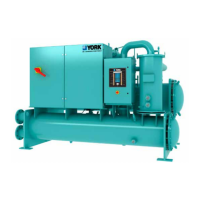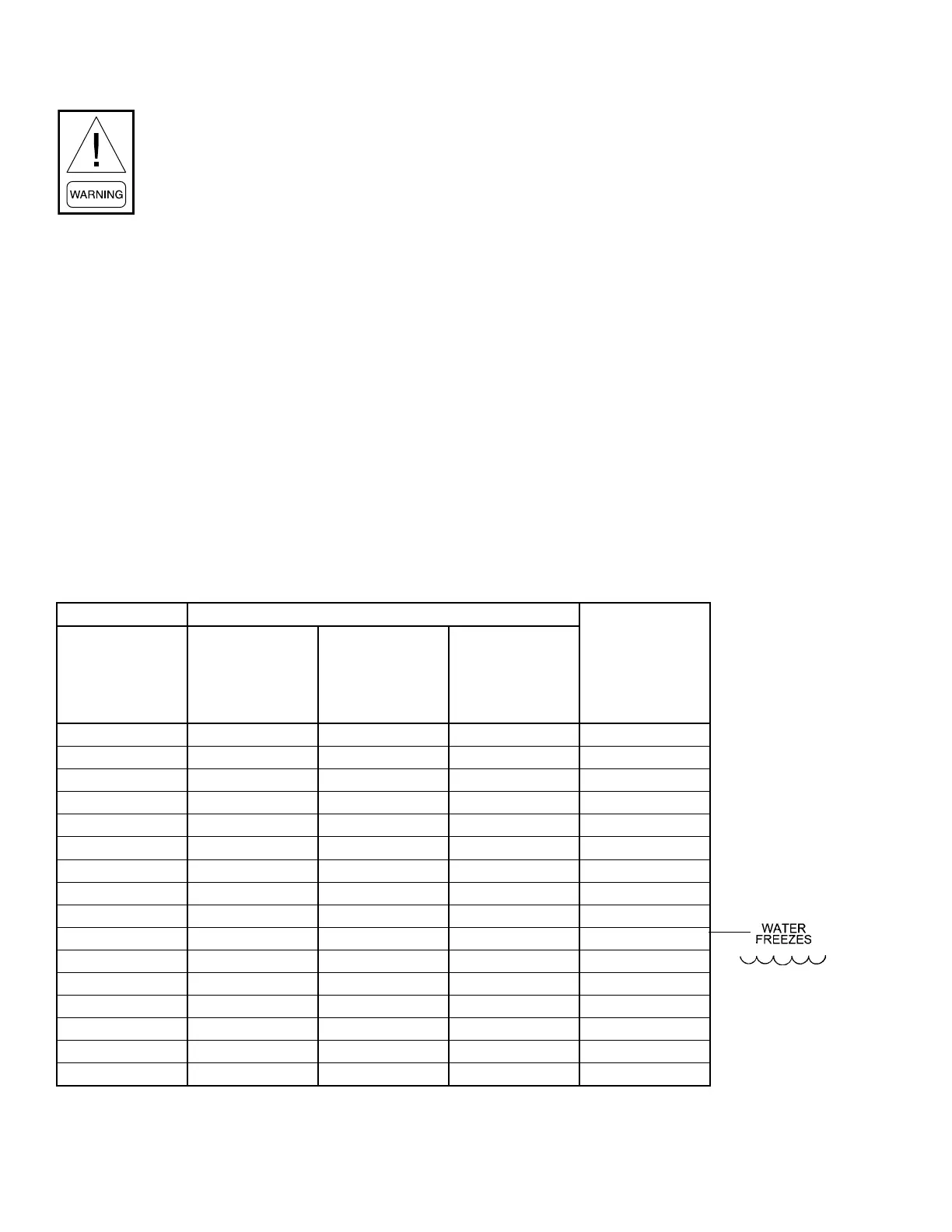JOHNSON CONTROLS
140
FORM 201.30-ICOM1 (519)
ISSUE DATE: 05/22/2019
SECTION 7 - MAINTENANCE
EVACUATION AND DEHYDRATION OF UNIT
Make sure the power is removed from the
input side of the VSD at all times when
the chiller is under vacuum (less than at-
mospheric pressure). The VSD maintains
voltage to ground on the motor when the
chiller is off while voltage is available to
the VSD. Insulating properties in the mo-
tor are reduced in vacuum and may not
insulate this voltage sufciently.
Vacuum Dehydration
If the chiller is opened to the atmosphere for lengthy
repair or service, follow these guidelines to ensure that
all air, moisture and non-condensable gases are re-
moved prior to placing the chiller into service.
The equipment required to complete this method of de-
hydration consists of:
• a wet bulb indicator or vacuum gauge
• and a vacuum pump capable of pumping a suit-
able vacuum on the system.
Refer to Table 45 on page 140 to see the relation be-
tween dew point temperature and system pressure in
inches of mercury (vacuum).
Dehydration of a refrigerant system can be completed
by this method because the water present in the system
reacts like refrigerant. Pulling down the pressure in the
system where its saturation temperature is below room
temperature, heat will flow from the room through the
walls of the system and vaporize the water, allowing a
percentage of it to be removed by the vacuum pump.
The length of time necessary to dehydrate a system de-
pends on the following:
• Size or volume of the system
• Capacity and efciency of the vacuum pump
• Room temperature
• And quantity of water present in the system.
TABLE 45 - SYSTEM PRESSURES
*GAUGE ABSOLUTE
DEW POINT
TEMPERATURES
OF
WATER
°F
In OF
MERCURY (HG)
BELOW ONE
STANDARD
ATMOSPHERE
PSIA
MILLIMETERS OF
MERCURY (HG)
MICRONS
0 14.696 760. 760,000 212
10.24" 9.629 500. 500,000 192
22.05" 3.865 200. 200,000 151
25.98" 1.935 100. 100,000 124
27.95" 0.968 50. 50,000 101
28.94" 0.481 25.0 25,000 78
29.53" 0.192 10.0 10,000 52
29.67" 0.122 6.3 6,300 40
29.72" 0.099 5.0 5,000 35
29.842" 0.039 2.0 2,000 15
29.882" 0.019 1.0 1,000 +1
29.901" 0.010 0.5 500 –11
29.917" 0.002 0.1 100 –38
29.919" 0.001 0.05 50 –50
29.9206" 0.0002 0.01 10 –70
29.921" 0 0 0 0
*One standard atmosphere = 14.696 psia
= 760 mm Hg. absolute pressure at 32°F
= 29.921 in Hg. absolute at 32°F
NOTE: PSIG = Lb per sq. in. gauge pressure
= Pressure above atmosphere
PSIA = Lb per sq. in. absolute pressure
= Sum of gauge plus atmospheric pressure

